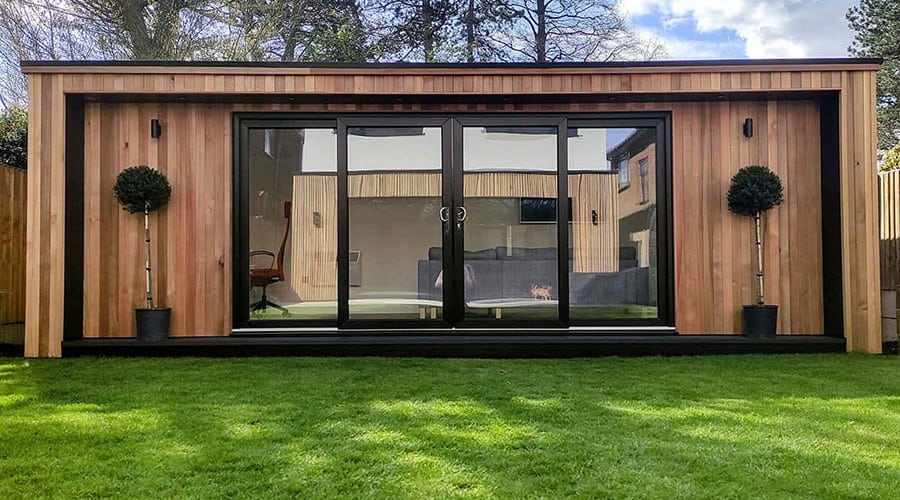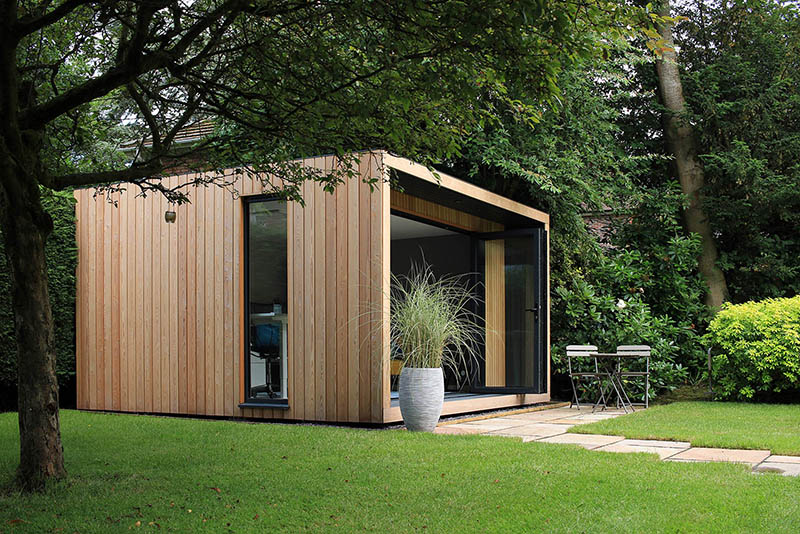Best Tips For Planning Permission For Garden Offices
Best Tips For Planning Permission For Garden Offices
Blog Article
What Planning Permits Are Needed For Garden Rooms, Etc. With Regard To Changes Of Use?
When building garden rooms or conservatories, outhouses, extension or garden offices the notion of "change of use" is a crucial factor in determining whether permission for planning is needed. Here are the key factors to consider when planning permission is required due to changing the use Change from Non-Residential to Residential Use
A planning permit is required when you want to convert a non-residential space (like a farm building or garage) into an office in the garden or in a living area. This is because any change to the use of the building is needed.
Garden Rooms: Living Accommodation
It's deemed to be a "change of usage" when you convert an existing garden into an independent dwelling for guests, like a guest house. Planning permission is required to make sure that the structure conforms to residential standards and regulations.
Business Use:
If you are planning to use the garden room, conservatory, or extension for business purposes (e.g. use it as an office space for an office-based business at home that has frequent guests or employees) the planning permission might be required. This is because of the potential impact on the neighborhood, such as traffic or noise and parking.
Educational or Community Use
A planning permit is required for the transformation of a garden building into a communal or educational space (such an auditorium, classroom, meeting hall, or auditorium). The local authority evaluates the location's suitability and its impacts on the surrounding areas.
Impact on Local Infrastructure
Any change of use that directly impacts the infrastructure in the local area (e.g. roads, drainage, and public services) generally requires planning permission. These impacts will be evaluated by the local authority for planning in the course of the process for submitting an application.
Dual Use
For properties that have mixed use (e.g., residential and commercial), a planning permit is usually required to clearly define the different uses.
More Traffic and Footfall:
If the proposed change could result in an increase in foot traffic or traffic, such as converting a garden into small shops then planning permission is required to handle any potential impacts to the location.
Building Regulations conformity:
Although it is not an issue of planning permission, any changes in the use of a space must be governed by the building regulations to ensure security, health, and energy efficiency standards. This is particularly important for conversions to habitable spaces.
Environmental Impact:
Planning permission is needed for changes to usage that could impact the environmental. An example would be converting an agricultural field into residential space. Environmental assessments could be required in the process of submitting an application.
The Community Effect and the Amenity Effect:
It is important to think about how the changes will impact the amenities of the community and the area's character. To ensure that the plan is in line with community plans, and local amenities are maintained the conversion of a garden into a cafe requires permission from the planner.
The following regions are classified as follows:
In areas designated as conservation zones, National Parks, or Areas of Outstanding Natural Beauty (AONB) modifications of usage are subject to more strict restrictions to protect the character and beauty of the place. In these instances it is necessary to obtain planning permission.
Local Planning Policies
Local planning authorities have their own policies regarding change of usage that can vary greatly. These policies are important for understanding what changes require approval and what criteria needs to be fulfilled.
Planning permission is generally required for significant changes to the usage of a conservatory, garden room outhouse or garden office. This ensures that any new usage is compatible with the location, adheres to the national, local, and environmental planning policies and is able to take into consideration potential impacts. Consulting with your local authority for planning at the beginning of the planning process is vital to identify the exact requirements and to obtain the necessary approvals. View the top rated planning permission for holiday let in garden for blog advice including best heater for log cabin, garden rooms, what size garden room without planning permission, garden room planning permission, what size garden room without planning permission uk, insulated garden rooms, garden room vs extension, what size garden room without planning permission, garden office hertfordshire, garden room planning permission and more.
What Height Restrictions Must You Follow When Designing The Layout Of Your Garden?
The height of garden rooms and conservatories as well outhouses, office buildings, or extensions will determine if or not a permit for planning is required. These are the most important height-related criteria you need to know:
The maximum height should not exceed 4 metres for an outbuilding, or an addition with a double-pitched roof.
Other types of roof (flat or single-pitched) cannot exceed three meters in height. For any other type (flat, single pitched, etc. ), the height maximum should not be more than three meters.
Proximity to boundaries
The maximum height for a structure within 2 metres of the property line is not to exceed 2.5 meters. This applies to garages, sheds, as well as similar structures.
Eaves Height:
For any structure, the maximum height of the eaves (the height from the lowest point on the roof) cannot be more than 2.5 meters.
Extensions, conservatories and other types of conservatories:
For an extension to the rear of a home that has only one story the maximum height is four metres. This includes the roof as well any walls that are parapet.
Side Extensions
Extensions to the sides of the house should not be taller than 4 meters, and not larger than half the original width.
Special Roofs
Structures that have a flat-roof are typically restricted to a height that is not more than 3 meters.
Additional Restrictions to designated areas
In areas of outstanding natural beauty Conservation areas, zones of Outstanding Natural Beauty and other designated zones, there might be stricter height restrictions and permits for construction that would typically fall under allowed development rights.
Buildings within National Parks
National Parks can have height restrictions similar to those found in designated areas. Planning permission is required.
Design of the Roof:
It is important to consider the height (excluding chimneys, antennas, etc.). is to be considered. Planning permission will be required if the highest point is higher than the allowed development limit.
Neighbours affected:
Planning approval is necessary even if the structure does not exceed the height limit. It may be required if there are significant impacts on privacy, light or views of neighboring properties.
Maximum Overall Height
The height of a structure should not exceed 4 meters. For instance, a backyard office with a roof that is double pitched should not exceed 4 meters at its tallest level.
Decking and Platforms
To avoid the need for permission to plan, platforms or decks part of the structure must not elevate the level of ground by more than 0.3 meters.
Always check with the local authority for planning to find out regarding any changes to regulations or specific rules. Even if an enterprise falls within the general permitted development rights, certain conditions or local variations could require approval from the planning authority. Follow the best cardio workouts welwyn for more recommendations including Tring garden rooms, ground screws vs concrete, composite summer house, ground screws vs concrete base, garden buildings , what is a garden room, outhouse uk, costco garden office, costco outhouse, out house for garden and more.
Location Restrictions: What Permissions Are You Required To Obtain For Garden Rooms As Well As Other Structures?
If you're planning to construct the garden room, conservatory outhouse, extension, or garden office The restrictions on the area will determine whether permits for planning are required. Here are the major location-related factors to consider: Proximity of Boundaries
Any structure within 2 meters of the property's boundaries must not exceed a height of 2.5 meters. If this height is exceeded then planning permission must be obtained.
Front of the property:
The development rights granted by the permit do not usually allow for extensions or forward-facing structures.
Right-hand side of property:
Side extensions must adhere to certain height and size restrictions. They often require planning approval if they extend over the side walls of the house.
Rear of the property
The height and size of rear extensions as well as garden rooms to the rear of the house is limited. Planning permission could be required when the garden or extension rooms exceed the allowed building boundaries.
Designated Zones:
In National Parks, World Heritage Sites and Areas of Outstanding Natural Beauty there are stricter regulations. Planning permission is required for any new structure regardless of how big.
List Buildings
Properties that are listed buildings are subject to strict rules. Planning permission as well as listed-building consent are typically required to construct the new structure or to alter the existing structure, regardless of the location on the property.
Green Belt Land:
Building on green belt land is heavily restricted in order to preserve the open space. Building on green belt land is severely restricted to preserve open space.
Flood Risk Areas
Additional regulations may apply if the property in question is located in an area that is susceptible to flooding. They are intended to keep the building of a new building from increasing flood risk. A flood risk assessment as well as planning approval may be required.
Urban vs. rural environments
Urban and rural settings are often governed differently. For instance, rural homes may have fewer restrictions on the size and location of outbuildings however this can vary widely.
Highways and Public Rights of Way:
The structure could require planning permission to ensure that it doesn't block views, access or safety when it is located near highways, roads or other public rights-of way.
Shared Ownership Land, Leasehold Land, or
If the property is leased, or part of a shared ownership scheme, it could require additional permissions. Planning permission might be required, depending on local regulations.
Nearby to Other Structures
It may be necessary to obtain planning permission if the new structure is planned to be constructed near the existing buildings or structures, particularly on neighbouring properties. This will ensure that the structure or land that is adjacent to it is not negatively affected.
For advice regarding the specifics of your property's situation and location, you'll need to contact the local planning authority. Local policies can affect the rules, and it's crucial to make sure you're in that you comply with all regulations. Have a look at the top insulated composite garden office for more recommendations including costco outhouse, ground screws vs concrete, how to get power to a garden room, garden room conservatory, myouthouse, garden office electrics, garden room or extension, what size garden room without planning permission, what is a garden room, how to get power to a garden room and more.